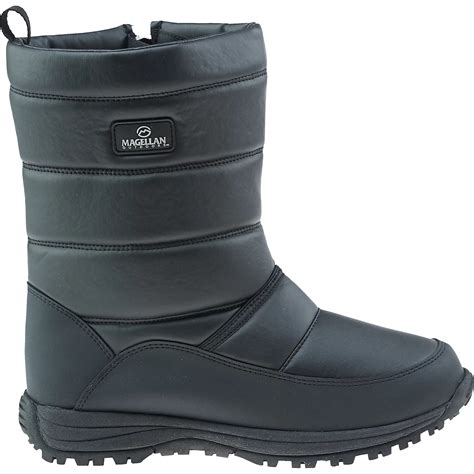5 Winter Boot Tips

As the winter months approach, it’s essential to prioritize footwear that can withstand the harsh conditions. Winter boots are a staple in many people’s wardrobes, but with so many options available, it can be overwhelming to choose the right pair. Here are five expert tips to help you make the most out of your winter boots and ensure your feet stay warm, dry, and comfortable all season long.
1. Waterproofing is Key
One of the most critical factors to consider when selecting winter boots is their waterproofing capabilities. A good pair of winter boots should be able to keep your feet dry even in snowy or icy conditions. Look for boots made from waterproof materials such as leather, suede, or synthetic fabrics, and ensure they have a waterproof membrane, such as Gore-Tex or similar technology. This membrane acts as a barrier, preventing water from entering the boot while allowing moisture to escape, which helps prevent blisters and keeps your feet dry.
For added protection, consider applying a waterproofing spray or cream to your boots, especially if they are made from leather or suede. This will help maintain the material's integrity and ensure your feet stay dry.
2. Insulation for Warmth
Insulation is another crucial aspect of winter boots. The right amount of insulation can make a significant difference in keeping your feet warm. Look for boots with insulation materials such as Thinsulate, PrimaLoft, or similar technologies. These materials provide excellent warmth without bulk, ensuring your boots remain comfortable and versatile for various winter activities.
| Insulation Material | Warmth Rating | Weight |
|---|---|---|
| Thinsulate | High | Light |
| PrimaLoft | High | Light |
| Very High | Light |

3. Traction for Safety
Winter conditions can be slippery, making traction an essential feature in winter boots. A good grip can prevent falls and injuries, especially on icy surfaces. Look for boots with outsoles made from rubber or similar materials that provide excellent traction. Additionally, consider boots with lug soles, which are specifically designed to provide stability on uneven and slippery surfaces.
"The right tread pattern can make all the difference in preventing slips and falls. Always check the outsole for deep treads and a durable rubber compound for maximum grip."
4. Comfort and Fit
While functionality is crucial, comfort and fit should not be compromised. Winter boots should fit snugly but not too tightly, allowing for thick socks and ensuring good blood circulation. Pay attention to the boot’s height, as higher boots can provide additional protection against snow and cold. Additionally, consider the lacing system, which should be easy to use and provide a secure fit.
Ensuring the Right Fit
- Try boots on in the afternoon, as feet tend to swell throughout the day.
- Wear the same type of socks you plan to wear with the boots.
- Ensure there's enough room to wiggle your toes.
- Check the heel fit; it should be snug but not too tight.
5. Maintenance for Longevity
Finally, maintaining your winter boots is key to extending their lifespan. Regularly clean your boots to remove dirt and salt, which can damage the materials. For leather boots, use a leather conditioner to keep the leather soft and supple. For waterproof boots, reapply the waterproofing spray periodically to maintain the membrane’s effectiveness.
How often should I waterproof my winter boots?
+It's recommended to reapply waterproofing spray to your boots every 2-3 months or after every significant use, especially if you've been in wet conditions. This helps maintain the integrity of the waterproof membrane.
What's the best way to store winter boots when not in use?
+Store your winter boots in a cool, dry place. If they are wet, allow them to dry naturally. For leather boots, consider stuffing them with paper to maintain their shape. Avoid storing boots in direct sunlight or near heating vents, as this can cause the materials to degrade.
In conclusion, choosing the right winter boots involves considering several factors, from waterproofing and insulation to traction and comfort. By following these expert tips and maintaining your boots properly, you can ensure your feet remain warm, dry, and comfortable throughout the winter season. Whether you’re heading out into the woods, navigating icy city streets, or simply braving the elements, the right pair of winter boots can make all the difference.


